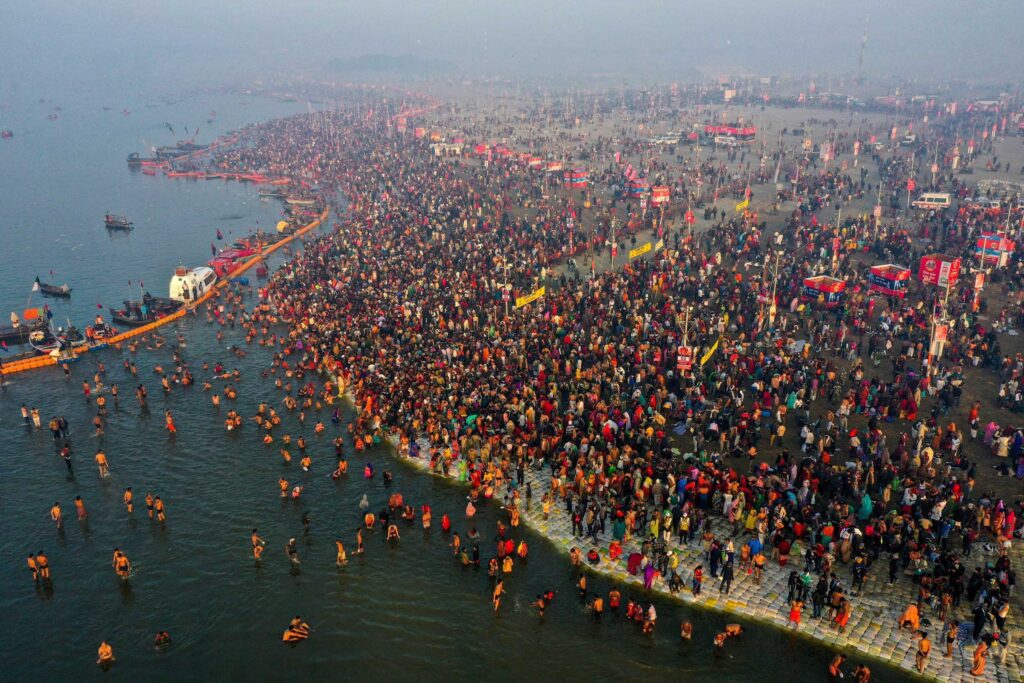Kumbh Mela: The World’s Largest Spiritual Gathering in India
The Kumbh Mela is one of the most significant and largest spiritual gatherings in the world, attracting millions of pilgrims, sadhus (holy men), and visitors from across the globe. Celebrated in a cycle of 12 years at four different locations in India—Prayagraj (Allahabad), Haridwar, Ujjain, and Nashik—the Kumbh Mela is a grand event rooted in ancient Hindu tradition. The most recent Kumbh Mela took place in Prayagraj in 2021, drawing massive crowds despite the challenges posed by the pandemic.
The Origin of Kumbh Mela

The Kumbh Mela's origins are tied to Hindu mythology. According to the legend, the gods and demons once churned the cosmic ocean in search of "amrit," the nectar of immortality. During this churning, a pot (kumbh) of nectar appeared. A fierce battle ensued, and drops of this nectar fell at four locations: Prayagraj, Haridwar, Ujjain, and Nashik. These places became spiritually significant, and the Kumbh Mela is celebrated at each location in rotation, drawing millions of devotees who come to bathe in the holy rivers for spiritual purification.
The Sacred Rituals
One of the most significant aspects of Kumbh Mela is the ritual bathing in sacred rivers. Pilgrims believe that by bathing in the Ganges (Haridwar and Prayagraj), the Godavari (Nashik), or the Shipra (Ujjain), they can cleanse themselves of sin and attain moksha (liberation from the cycle of rebirth). The most auspicious bathing days, known as "Shahi Snan" (Royal Baths), are led by ascetic groups and Naga Sadhus, who are often seen marching to the river in colorful, ceremonial processions.
The Spiritual and Cultural Impact
The Kumbh Mela is not just a religious event but a massive cultural and social gathering. It serves as a platform for the exchange of spiritual ideas and philosophies, as monks, spiritual leaders, and scholars gather to discuss religion, philosophy, and modern societal challenges. For many, the Kumbh Mela is a transformative experience, bringing them closer to the divine and reaffirming their faith.
Managing the Masses
The logistical challenge of organizing the Kumbh Mela is staggering. In 2021, the Prayagraj Kumbh Mela was spread over an area of 58 square kilometers and involved complex arrangements for transportation, sanitation, medical facilities, and security. The event saw the implementation of high-tech surveillance and AI-based crowd control to ensure safety. Despite the COVID-19 pandemic, the authorities ensured that health protocols were in place, making it a testament to India's organizational capabilities.
Conclusion
The Kumbh Mela is a majestic convergence of faith, culture, and humanity. It showcases India's rich spiritual heritage and the timeless tradition of seeking divine connection through pilgrimage. For those who attend, it is not just a ritual but an experience of devotion, community, and the sacred. Every Kumbh Mela leaves a lasting impression, not only on the millions of pilgrims who participate but also on the global spiritual consciousness.
